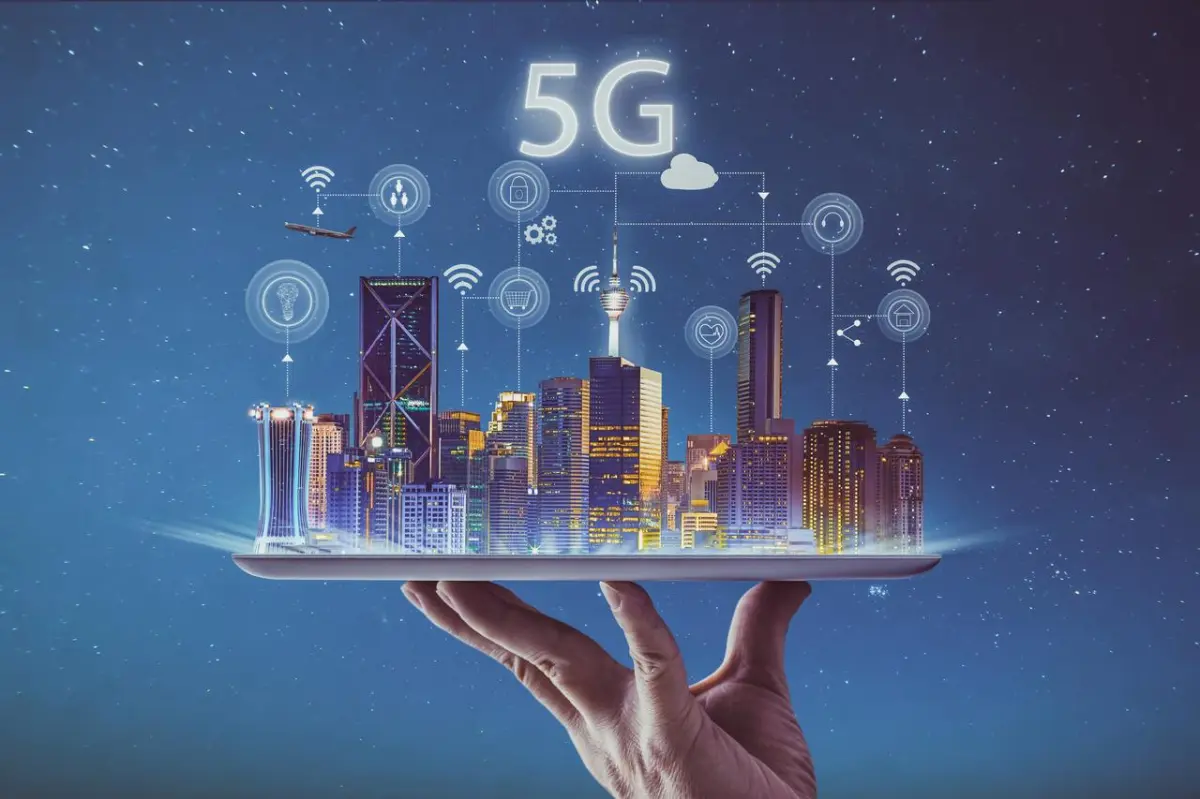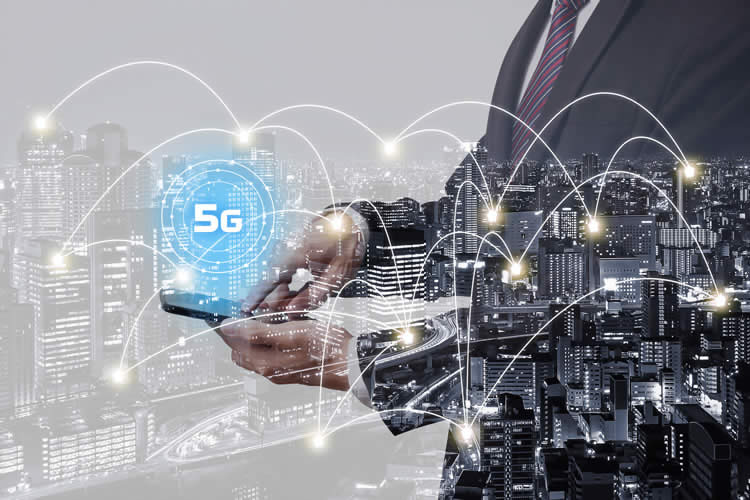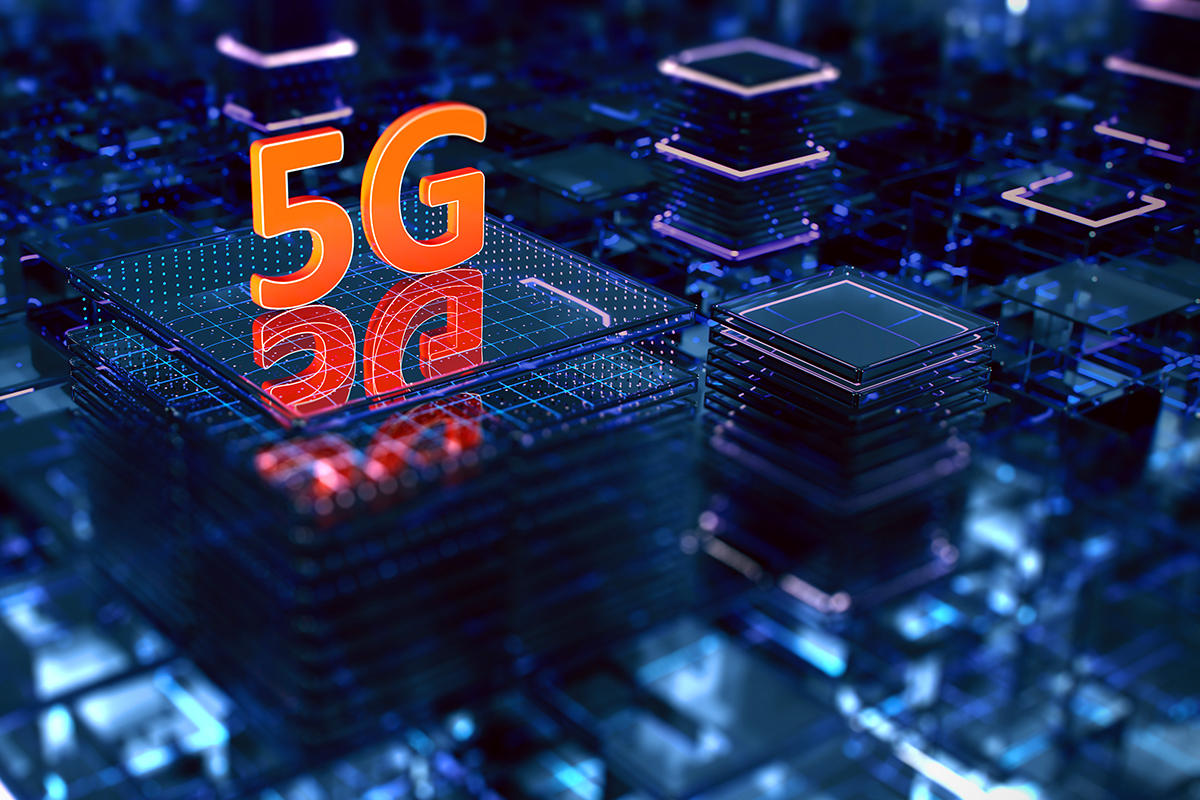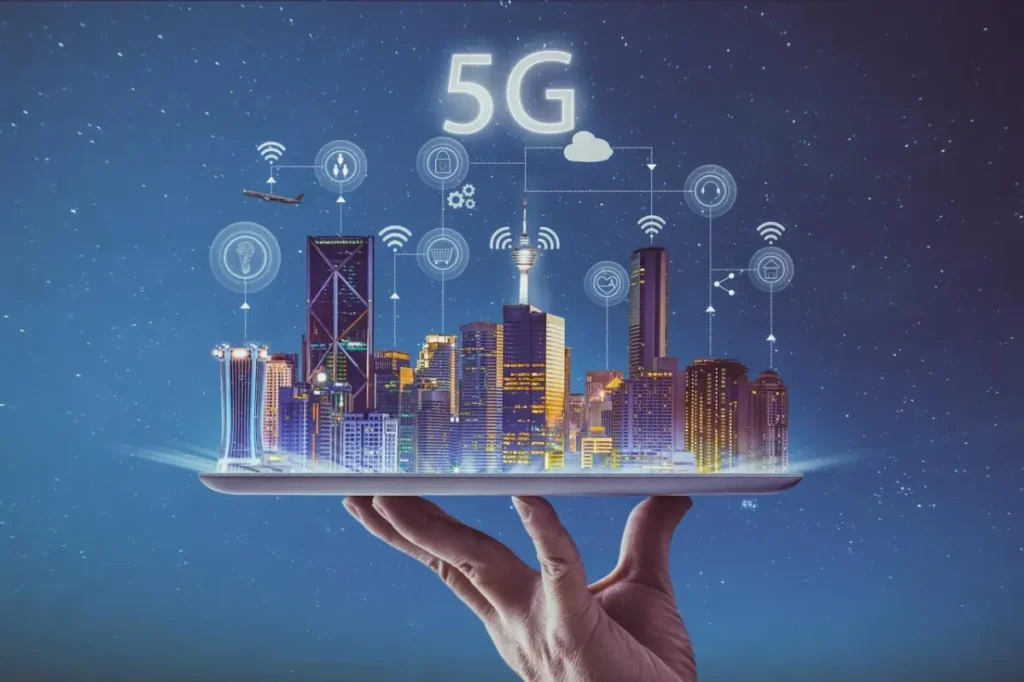The arrival of 5G, the fifth generation of wireless network technology, is transforming the way we communicate, connect, and interact with the https://visa.javanet247.com/5g-network-the-future-of-connectivity.htmldigital world. While its predecessors, such as 3G and 4G, brought us mobile internet and fast data speeds, 5G promises to revolutionize industries, cities, and societies with unprecedented speed, ultra-low latency, and the ability to connect millions of devices simultaneously.

As 5G continues to roll out worldwide, it is set to be a game-changer in many aspects of daily life, from smart cities and autonomous vehicles to advanced healthcare and entertainment. In this article, we’ll explore what 5G is, how it works, and its potential applications and challenges in shaping the future of global connectivity.
What is 5G?
5G, or fifth-generation cellular network technology, is the latest advancement in mobile communications. It builds on the foundations of 4G LTE (Long-Term Evolution), offering faster data transfer rates, lower latency, and greater network capacity. While 4G focused on improving speed, 5G is designed to address three main areas: enhanced mobile broadband, ultra-reliable low latency communication (URLLC), and massive machine-type communication (MMTC).
These three pillars aim to enable new technologies and services that require high-speed data, real-time interactions, and the connection of billions of devices, known as the Internet of Things (IoT). Here’s how 5G differs from previous generations:
- Enhanced Mobile Broadband (eMBB): This aspect of 5G focuses on increasing data speeds and bandwidth for traditional mobile uses such as streaming, gaming, and web browsing. 5G can deliver download speeds up to 100 times faster than 4G, with peak data rates of 10 Gbps, enabling high-definition video streaming and augmented reality (AR) applications.

- Ultra-Reliable Low Latency Communication (URLLC): One of 5G’s most significant advancements is its ability to reduce latency (the time it takes for data to travel from one point to another) to as low as 1 millisecond. This near-instantaneous response is crucial for applications like autonomous vehicles, remote surgeries, and real-time gaming.
- Massive Machine-Type Communication (MMTC): 5G is built to connect billions of devices simultaneously, making it ideal for the Internet of Things (IoT). From smart homes and factories to connected cities, 5G will support a vast number of devices interacting with one another seamlessly.
How Does 5G Work?
The technology behind 5G is built on a combination of new radio frequencies, advanced antenna technologies, and network slicing to deliver its transformative benefits. Here’s an overview of the key components that make 5G work:
- Spectrum and Frequencies: 5G operates across three different frequency bands—low-band, mid-band, and high-band (also known as millimeter-wave or mmWave)—each with its own benefits and trade-offs:
- Low-Band (Sub-1 GHz): This spectrum offers broad coverage and can penetrate buildings and obstacles effectively, but it provides lower data speeds than other bands.
- Mid-Band (1–6 GHz): Offering a balance between speed and coverage, mid-band frequencies are well-suited for urban areas, providing both good coverage and relatively fast speeds (up to 1 Gbps).

- High-Band (mmWave, 24 GHz and above): These frequencies deliver the fastest speeds (up to 10 Gbps), but they have limited coverage and struggle to penetrate buildings. They are most commonly used in densely populated areas, such as city centers, to provide high-capacity coverage.
- Massive MIMO: Massive MIMO (Multiple Input, Multiple Output) is an advanced antenna technology used in 5G networks. It increases the capacity of a network by allowing multiple data streams to be transmitted simultaneously. This improves the efficiency of spectrum use and allows for faster data transfer and more connections per cell tower.
- Beamforming: Beamforming is a technique that improves signal strength and quality by directing the signal in a focused beam toward the device rather than broadcasting it in all directions. This reduces interference and enhances the user experience, especially in densely populated areas.
- Network Slicing: Network slicing allows the 5G network to be partitioned into multiple virtual networks, each tailored for specific applications. For example, one slice may be optimized for ultra-low latency, while another is configured for high-speed mobile broadband. This flexibility enables service providers to offer customized network experiences based on the needs of individual users or industries.
Applications of 5G
5G is expected to have a profound impact on various sectors, enabling new applications and services that were previously unimaginable with 4G. Here are some of the key areas where 5G will make a difference:
- Smart Cities: 5G is a crucial enabler of smart cities, where connected infrastructure and IoT devices work together to improve urban living. From smart traffic management systems that reduce congestion to energy-efficient buildings that optimize power usage, 5G will help cities operate more efficiently.
Additionally, 5G can support real-time monitoring of critical infrastructure like bridges, roads, and utilities, ensuring maintenance is performed before failures occur. Smart cities will also leverage 5G to enhance public safety through surveillance systems and emergency response networks that provide real-time information to first responders.
- Autonomous Vehicles: Self-driving cars require low-latency, high-bandwidth communication to navigate safely and make split-second decisions. 5G’s URLLC capabilities are essential for enabling real-time data exchange between autonomous vehicles, traffic management systems, and other connected devices on the road.
With 5G, vehicles will be able to communicate with each other (Vehicle-to-Vehicle, or V2V) and with infrastructure (Vehicle-to-Infrastructure, or V2I) to improve safety, reduce accidents, and optimize traffic flow. This technology will be a key component in achieving fully autonomous transportation systems.
- Healthcare: 5G will revolutionize healthcare by enabling telemedicine, remote surgery, and real-time patient monitoring. With ultra-low latency, doctors can perform surgeries on patients thousands of miles away using robotic systems controlled over 5G networks. This opens the door to high-quality healthcare in remote or underserved areas.
Additionally, 5G will support connected medical devices that continuously monitor patient health and send real-time data to healthcare providers. This can improve early detection of health issues, reduce hospital visits, and enable more personalized treatment plans.
- Industry 4.0: The Industrial Internet of Things (IIoT), or Industry 4.0, will be powered by 5G networks. In manufacturing and logistics, 5G will enable smart factories where machines communicate with each other to optimize production processes. Real-time data from sensors will allow companies to monitor equipment, predict maintenance needs, and prevent downtime.
Drones and autonomous robots will also benefit from 5G’s low-latency communication, enabling them to perform tasks such as inventory management, package delivery, and environmental monitoring with greater precision and efficiency.
- Entertainment and Media: 5G will transform the way we consume media by enabling immersive experiences such as virtual reality (VR) and augmented reality (AR). With 5G’s high data speeds and low latency, users will be able to experience real-time VR gaming, live sports events in 360-degree video, and interactive AR applications without lag or buffering.
Moreover, 5G will allow content creators to stream and upload high-definition videos faster than ever before, creating new possibilities for real-time collaboration and live events.
Challenges and Considerations

Despite its incredible potential, the deployment of 5G is not without challenges. Some of the key hurdles include:
- Infrastructure Costs: Rolling out 5G networks requires significant investment in infrastructure, including the installation of new base stations and fiber-optic networks. The high-band mmWave frequencies, in particular, have limited range, meaning that telecom companies will need to deploy many more small cells to provide coverage in urban areas.
- Security Concerns: With the expansion of connected devices and increased data transfer, 5G networks present new security challenges. Cyberattacks on critical infrastructure, IoT devices, and personal data may become more common. To address these risks, network providers must implement robust security protocols and ensure that data privacy is maintained.
- Regulatory and Spectrum Allocation: Governments and regulatory bodies must allocate the necessary spectrum for 5G deployment. In some countries, there are delays in spectrum auctions and regulatory approvals, which can slow down the rollout of 5G networks.
- Rural Connectivity: While 5G promises to improve connectivity in urban areas, extending 5G coverage to rural or remote regions poses a significant challenge due to the high cost of infrastructure and the limited range of high-band frequencies. Bridging the digital divide will require government support and investment in infrastructure.
The Future of 5G
As 5G continues to evolve and mature, its impact on industries, businesses, and individuals will only grow. The development of 6G technology is already being discussed, promising even greater speeds, lower latency, and more intelligent networks.

In the near future, we can expect 5G to accelerate the growth of smart homes, smart cities, and autonomous systems, making our lives more connected and efficient. The metaverse, a virtual reality universe where users can interact in real.

